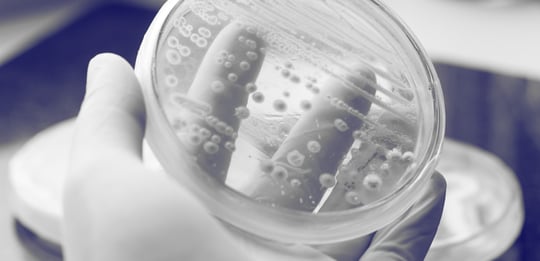
Probiotics – those “good bacteria” found in yoghurts, supplements, and animal feed – are big business and a hot topic.
Defined by FAO/WHO as “live microorganisms that, when administered in adequate amounts, confer a health benefit on the host”. Whether proven or not, the promise of gut health, immune support, and sustainable alternatives has driven widespread interest. But entering the EU market with these products means navigating a layered and often complex regulatory landscape, depending on whether they are destined for the dining table or animal trough. For clarity, we use the term “probiotic” here to refer to all live cultures, regardless of authorised health claims.
Probiotics in food: Novel innovations, old challenges
Consumer demand for gut-supporting foods is booming. The global probiotic food market continues its double-digit growth, fuelled by technological innovation, newly discovered strains, and creative delivery formats. Traditional dairy-based probiotics are being joined by non-dairy options such as fortified juices, plant-based yoghurts, snack bars and functional foods enriched with beneficial bacteria. Investigations into commensal species such as Faecalibacterium prausnitzii, Christensenella minuta and Akkermansia muciniphila are gaining pace.
Advances in stabilisation techniques (e.g. microencapsulation, spray-drying, and even 3D printing) are improving probiotic viability. In tandem, product developers are formulating synbiotics (e.g. pairing novel probiotic strains with specific prebiotic fibres) to enhance efficacy and colonisation in the gut.
Designer or “next-generation” probiotics are making their way into novel foods, with enhanced functions from engineered or targeted strains. Emerging categories like postbiotics and paraprobiotics, which use inactivated microbial cells or fragments, are also showing promise. Notably, pasteurised cells of Akkermansia muciniphila – a gut bacterium known for strengthening the intestinal barrier – have already been approved as a novel food in the EU, marking a milestone for non-viable alternatives. Recent studies have demonstrated the health benefits beyond the inherent viability of probiotics, and novel functional products containing inactive probiotic cells may have strong potential to gradually replace classical probiotics.
Precision fermented microbial foods: Pioneering alternative proteins
Companies like Perfect Day have challenged the dairy industry by using fermentation-based processes to produce animal-free dairy proteins. These proteins are created through microbial fermentation, specifically engineered yeast, which outputs whey and casein that mirror their cow-produced counterparts in functionality and taste but without the environmental footprint of traditional dairy farming. Similarly, Solar Foods is exploring the potential of single-cell proteins from microbes that convert carbon dioxide and electricity into a nutritious and sustainable protein source called Solein, potentially reducing dependency on agricultural land and water.
When are live microorganisms considered novel foods?
The EU Novel Food Regulation (2015/2283) governs whether a food or ingredient requires approval. Many common probiotic species like Lactobacillus and Bifidobacterium have been consumed for centuries in traditional fermented foods (yogurt, cheese), predating May 15, 1997, so they would not typically be considered novel when used traditionally.
However, newly isolated strains, modified organisms, or microbes sourced from non-traditional environments, perhaps from an unusual source, or one produced using a new technology, may lack sufficient history of consumption and are likely to require full safety assessment and approval to be included into the European Commission’s Union list of authorised novel foods.
Probiotics in animal nutrition
In the feed sector, probiotics have become a cornerstone of modern animal nutrition, especially after the EU’s ban on antibiotic growth promoters. Strains such as Lactobacillus, Enterococcus, Bacillus, and various yeasts are widely used to stabilise gut flora in animals. They help suppress harmful pathogens, improve digestion, enhance nutrient uptake, reduce diarrhoea in young animals, and enhance feed conversion efficiency.
These products are classified under zootechnical additives, feed additives that directly benefit animal performance or welfare, and follow a regulated pathway to market. Demand is rising, not just for performance, but to align with consumer expectations for antibiotic-free, sustainable farming practices.
EU Regulatory Framework
The EU has a comprehensive regulatory framework governing the use of probiotics in both foods and feeds, aimed at ensuring safety, scientific substantiation, and truthful marketing. EFSA maintains a Qualified Presumption of Safety (QPS) list, which helps streamline the evaluation of well-known microbial species. Still, depending on how a probiotic is used, different regulations apply. In fact, in the new Draft Guidance on the characterisation and risk assessment of microorganisms used in the food chain, EFSA does not use the term ‘probiotic’ even though it lists over 50 references on probiotics.
"Probiotic" is an unauthorised health claim
Importantly, in the EU regulatory context, “probiotic” is considered a health claim, and unauthorised unless proven. Under the Health Claims Regulation (EC 1924/2006), only one claim related to live bacteria is currently approved: the lactose digestion claim for Lactobacillus delbrueckii subsp. bulgaricus and Streptococcus thermophilus in yoghurt and fermented milk. The claim was that the strains improve digestion of lactose in individuals who have difficulty digesting it (EU Register of health claims; Commission Regulation 432/2012).
Without EFSA-approved claims, even calling a product “probiotic” is not allowed, regardless of scientific enthusiasm. Health claims of probiotics fall under Regulation (EC) 1924/2006, which requires that any such claim must be:
-
Specific, measurable, and clearly beneficial to human health (vague claims like "supports gut health" are usually rejected)
-
Scientifically proven claimed effect with robust human clinical trials in the target population (often the general healthy population)
-
Clearly attributed to a specific, well-characterised strain
Hundreds of health claim applications for probiotics have failed EFSA’s scrutiny. Common reasons include insufficient strain characterisation, poorly defined claims, lack of convincing human studies, and failure to show a benefit specifically in healthy people. The only exception is the lactose digestion claim mentioned above.
The result is that probiotic food manufacturers must be extremely cautious with their marketing language, avoiding the word “probiotic” in product packaging. Instead, they typically refer to “live cultures” and rely on consumer awareness, a workaround that limits public education and product positioning.
A clearer path: Probiotics in animal feed
In stark contrast to the human food scenario, probiotics have a well-established and clearly regulated role in animal nutrition (EU Register of Feed Additives). The EU's 2006 ban on antibiotic growth promoters further boosted the market for effective alternatives like probiotics in animal feed. They are routinely added to feed for livestock, poultry, fish, and pets.
Governed by Regulation (EC) No 1831/2003 on feed additives, probiotics – known as “gut flora stabilizers” – are approved as zootechnical additives. They are used to improve gut health, enhance nutrient digestion, support the immune system, control pathogens, and ultimately improve animal performance and productivity. These are assessed not only for safety but also for efficacy in the target animal. EFSA’s evaluation ensures that additives actually deliver the performance benefits claimed.
This pre-market authorisation model has helped the sector mature and grow, offering a robust alternative to antibiotics in modern animal production systems.
The regulatory divide for probiotics in food vs. feed
|
Feature |
Food Use |
Feed Use |
|
Authorisation framework |
Novel Food Regulation (EU 2015/2283), Health Claims Regulation (EC 1924/2006) |
Feed Additives Regulation |
|
Use of "probiotic" |
Restricted (unauthorised health claim) |
Accepted as “gut flora stabiliser” |
|
Evidence required |
Safety + health claim efficacy |
Safety + efficacy in target animal |
|
Health claims |
Strictly regulated, few authorised |
Not applicable |
|
Common issues |
Novelty status, lack of claim acceptance, costly human trials |
Dossier complexity, trial data for efficacy |
Implications for commercial probiotic applications
For companies developing probiotic products, the EU regulatory landscape offers both a challenge and a competitive advantage.
On the one hand, the system provides strong consumer protection: probiotic ingredients must be proven safe and, in the case of animal feed, demonstrably effective. Using established strains from EFSA’s QPS list can simplify this process, but introducing innovative strains or novel functionalities demands significant investment in research and regulatory documentation.
On the other hand, the strict approach to health claims under Regulation 1924/2006 means that European consumers often won’t see bold probiotic benefit claims on product labels. Companies must rely on subtler communication by educating consumers through off-label channels or emphasising general wellness aspects.
Despite these constraints, EFSA approval lends scientific credibility and long-term market value. Products that make it through the system, whether as novel foods or zootechnical additives, gain an edge in consumer trust. As high-quality evidence accumulates and regulatory science evolves, there’s cautious optimism in the sector that more health claims may eventually be approved.
In the meantime, Europe’s balanced focus on innovation, safety, and evidence ensures that probiotics in foods and feeds deliver real benefits, whether it’s a novel gut-friendly food on supermarket shelves or a microbial feed additive helping to raise healthier animals.
Biosafe offers a suite of specialized services tailored for companies developing and operating with probiotics and starter cultures.
Stay informed about how Biosafe is navigating these changes and leading in food safety by visiting our blog and participating in our upcoming webinars. Together, we are shaping the next decade of food safety innovations.
Biosafe is your guide to successful food and feed product approval, providing extensive expertise in food safety assessment, research and legislation. By helping to bring new and more sustainable food solutions to market, we are working with our customers to create a safer food future.
Topic:















